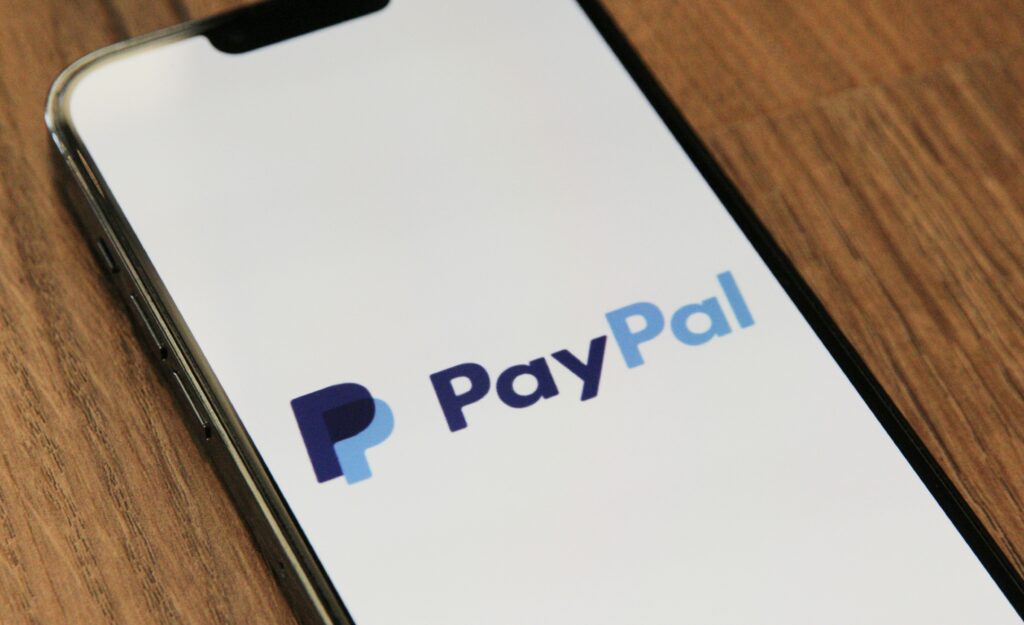In a rapidly digitizing world, traditional banking systems are finding themselves at the crossroads of evolution. Macquarie Bank’s recent announcement, intending to transition entirely to a digital-only banking system by November 2024, underscores this global shift.
While this move may be seen as a nod towards progress and efficiency, it also sparks significant discussions, especially around the future of payments, customer inclusivity, and the broader financial system.
As Australia grapples with the reality of a declining use of cash and a possible cashless society, another intriguing financial force is emerging on the horizon: cryptocurrency. This digital, decentralized form of currency not only offers a fresh perspective on transactions but also carries the potential to address many concerns associated with the digital-only banking paradigm.
The Evolution of Banking in the Modern Era
The landscape of banking has undergone significant shifts in recent decades. Long gone are the days where physical banknotes, handwritten cheques, and phone payments reigned supreme. The rise of the internet and technological advancements has paved the way for more convenient, faster, and increasingly secure ways to manage and move money.
- Decline of Traditional Banking Methods: Macquarie Bank’s decision to phase out cash payments, cheques/checks, and phone payments might seem radical to some, but it’s a reflection of a broader global trend. Consumers have gravitated towards more instantaneous and paperless forms of payment. Checks, once a cornerstone of personal and business payments, are now seen as archaic in many countries.
- Rise of Electronic Payments: As traditional methods decline, electronic payments, led by credit and debit cards, have become the norm. The ease of a single swipe or tap, coupled with the increasing integration of financial systems and services on digital platforms, has made e-payments the preferred choice for many.
- Bank Branches and ATMs – An Endangered Species?: As consumers’ banking preferences have evolved, so too have the physical embodiments of the financial system. Over the last five years, there’s been a 30% decline in bank branches. Worldwide, as banking goes digital, the need for brick-and-mortar branches and ATMs is diminishing.
The path banking is taking is clear: digital, decentralized, and dynamic. Yet, as this evolution continues, it’s essential to address the potential challenges.
Is your business prepared for the future of transactions?
Cryptocurrency: The New Face of Digital Payments?
The concept of money is evolving. Cryptocurrency is emerging as a vibrant and disruptive thread, offering a fresh perspective on value exchange in our interconnected world.
What is Cryptocurrency?
At its core, cryptocurrency is a digital or virtual form of currency that uses cryptography for security, making it resistant to counterfeiting. Unlike traditional currencies issued by governments and central banks, cryptocurrencies like Bitcoin operate on decentralized platforms, primarily based on blockchain technology—a distributed ledger enforced by disparate computer networks.
Benefits Over Traditional Digital Payments
- Decentralization: One of the most significant draws to cryptocurrency is its decentralized nature. This means that no central authority, be it a government or a financial institution, controls the currency or its monetary policy. This autonomy can reduce the risks of currency manipulation and interference.
- Transparency and Security: Transactions made with cryptocurrencies can’t be reversed, unlike credit card chargebacks, which can offer more secure transactions. Plus, due to the public nature of blockchain, all transactions can be viewed by anyone and any time, ensuring full transparency in the network.
- Efficiency and Global Reach: Cryptocurrencies are not bound by exchange rates, interest rates, or other charges of any country. This makes for swift and cost-effective international transactions. Furthermore, with the internet available to a vast majority, cryptocurrency can be accessible to anyone, making it a potential tool for financial inclusion.
Crypto vs. Traditional Digital Payments
While credit and debit cards have been dominant in the digital payment space, they come with their own set of challenges—fees, potential for fraud, and dependence on banking systems. Cryptocurrencies, on the other hand, bypass these traditional banking systems, offering a peer-to-peer approach to transactions.
This doesn’t mean that one will replace the other overnight, but the distinct advantages of cryptocurrencies are making them increasingly attractive to users and investors alike.
Adoption Challenges
It’s important to note that while cryptocurrencies offer numerous benefits, they also come with their own set of challenges. Market volatility, regulatory issues, and the still-growing understanding and trust in this form of currency can act as barriers to widespread adoption. However, as with all new innovations, time, education, and regulatory clarity can pave the way for more extensive acceptance.
How Crypto Addresses the Concerns of a Digital-Only Banking System
While the transition towards a digital-only banking system seems inevitable, concerns abound—especially around inclusivity, accessibility, and the potential for centralized surveillance. Enter cryptocurrency. As a decentralized, transparent, and globally accessible platform, crypto might just offer the solutions many critics and concerned citizens are looking for.
Financial Inclusion for the Unbanked:
A significant portion of the global population remains unbanked, meaning they lack access to traditional banking services, credit cards, and other financial tools. This is not just an issue in developing nations; even in countries like Australia and America, pockets of the population find themselves excluded.
Cryptocurrencies, with their decentralized nature, can offer these individuals a way to engage in financial activities, from saving to transacting, without a bank account.
Mobility and Rural Empowerment:
Digital banking often assumes continuous and robust internet connectivity—a luxury not always available in rural or remote areas. With cryptocurrencies, many transactions can be performed offline and then synced when connectivity is available.
Additionally, crypto-focused startups are introducing innovative solutions for rural regions, ensuring that these areas aren’t left behind in the financial evolution.
Decentralized and Transparent Transactions
One of the criticisms against a digital-only banking system is the potential for increased financial surveillance. With a centralized system, there’s a single point of control, raising concerns about privacy and autonomy. Cryptocurrencies, being decentralized, can offer a more transparent and private alternative where transactions are recorded on a public ledger, but identities remain pseudonymous.
Global Transactions, Minus the Hefty Fees
One advantage of cryptocurrencies is the ability to send and receive money across borders without the usual fees or waiting times associated with traditional banks. This can be especially beneficial for migrants sending remittances or businesses engaging in international trade.
Empowering Small Businesses
Small businesses can greatly benefit from integrating crypto payments. Not only does it reduce the transaction fees often associated with card payments, but it also provides protection against fraudulent chargebacks and offers an additional payment method to cater to a diverse customer base.
Mitigating Closure Concerns
With the decline of physical bank branches, especially in remote areas, the availability of local financial services becomes a concern. Cryptocurrencies, by nature, don’t rely on physical infrastructure in the same way traditional banks do, making them a viable option for areas underserved by conventional financial institutions.
Want to start accepting crypto? Get in touch!
The Interplay Between Central Banks and Cryptocurrency
The rise of cryptocurrency has not gone unnoticed by the world’s central banks, including the Federal Reserve (FED) in America and the Reserve Bank of Australia (RBA). As these apex financial institutions observe the growth and potential of crypto, they are also exploring the idea of issuing their own digital currencies, known as Central Bank Digital Currencies (CBDCs).
Understanding CBDCs
Central Bank Digital Currencies are a new form of digital central bank money (the digital dollar). Unlike cryptocurrencies, which are decentralized and operate on public blockchains, CBDCs are typically centralized and issued directly by the central bank.
They serve as a digital representation of a country’s fiat currency.
Why Central Banks are Considering CBDCs
Several factors have spurred interest in CBDCs. These include ensuring the stability of payment systems in an increasingly digital economy, fostering financial inclusion, countering the decline in cash transactions, and maintaining public trust in the monetary system as alternatives like crypto gain traction.
CBDCs vs. Cryptocurrencies
While both CBDCs and cryptocurrencies are digital forms of money, they differ in their governance, issuance, and underlying technology. While cryptocurrencies are decentralized and operate without a central authority, CBDCs are the opposite. They remain firmly under the control and authority of central banks.
Cryptocurrencies like Bitcoin often prioritize transparency, decentralization, and immutability, whereas CBDCs may prioritize stability, control, and widespread adoption within a regulated environment.
Challenges and Concerns
The issuance of CBDCs isn’t without its challenges. Concerns range from potential impacts on monetary policy and interest rates to financial stability risks and the broader implications for the banking sector.
Moreover, ensuring privacy while maintaining compliance with regulations is a significant balancing act.
The Future of CBDCs and Crypto
Many experts believe that CBDCs and private cryptocurrencies can coexist in the financial ecosystem. While CBDCs may become a standardized digital form of fiat currencies, cryptocurrencies can serve more niche purposes, continue to innovate rapidly, and cater to those who prioritize decentralized systems.
Potential Roadmap for the Future: Merging Traditional and Crypto Systems
As we look to the future, the financial landscape appears to be at a fascinating crossroads. With traditional banks like Macquarie moving towards a digital-only platform and the world of cryptocurrency gaining traction daily, how might these two seemingly different worlds come together? Here’s a potential roadmap:
- Hybrid Banking Models:
- Bank-Crypto Partnerships: Traditional banks and payment service providers might collaborate with cryptocurrency platforms to offer integrated services. This could mean banks allowing customers to hold, buy, or sell cryptocurrencies directly from their bank accounts.
- Crypto-backed Financial Products: We could see an increase in financial products such as loans or mortgages backed by cryptocurrency assets.
- Integrated Payment Platforms:
- Systems that seamlessly integrate both traditional digital payments (like credit/debit cards) and cryptocurrency payments can be the norm. Such platforms will make it easier for consumers to choose their preferred payment method, whether it’s fiat currency or Bitcoin.
- Educational Initiatives:
- For successful integration, understanding is key. Both banks and crypto platforms might invest heavily in educating the public about digital currencies, their use cases, risks, and benefits. These might take the form of online courses, webinars, or even community workshops.
- Regulation and Collaboration:
- For cryptocurrencies to gain broader acceptance and for banks to incorporate them, a clearer regulatory framework is essential. This could involve governments, central banks, commercial banks, and crypto stakeholders collaborating to create guidelines that ensure security, transparency, and fairness.
- Infrastructure Development:
- Continued investment in building the necessary infrastructure, such as more crypto-friendly ATMs, mobile payment integrations, and advanced wallets that can hold both traditional currencies and cryptocurrencies.
- Global Standardization:
- As the world becomes more interconnected, there might be pushes to standardize certain aspects of digital payments and cryptocurrency transactions globally. This will make international transactions smoother and foster a more cohesive global financial ecosystem.
Conclusion: Embracing a Fluid Financial Future
The global financial landscape is undeniably evolving at a rapid pace. Macquarie Bank’s move towards a digital-only model serves as a testament to this change, highlighting the increasing digitization of the banking sector.
Yet, in parallel, the cryptocurrency ecosystem continues to burgeon, introducing novel approaches to transactions, savings, and investments.
As we stand at the cusp of this transformative period, it’s an opportunity for individuals, businesses, and governments worldwide to be part of a revolutionary journey. By embracing innovation and fostering a spirit of collaboration, we can ensure a financial future that benefits all.
The fusion of traditional banking and the dynamic world of crypto paints a promising picture—one where finance is not just a means to an end but a platform for endless possibilities.







